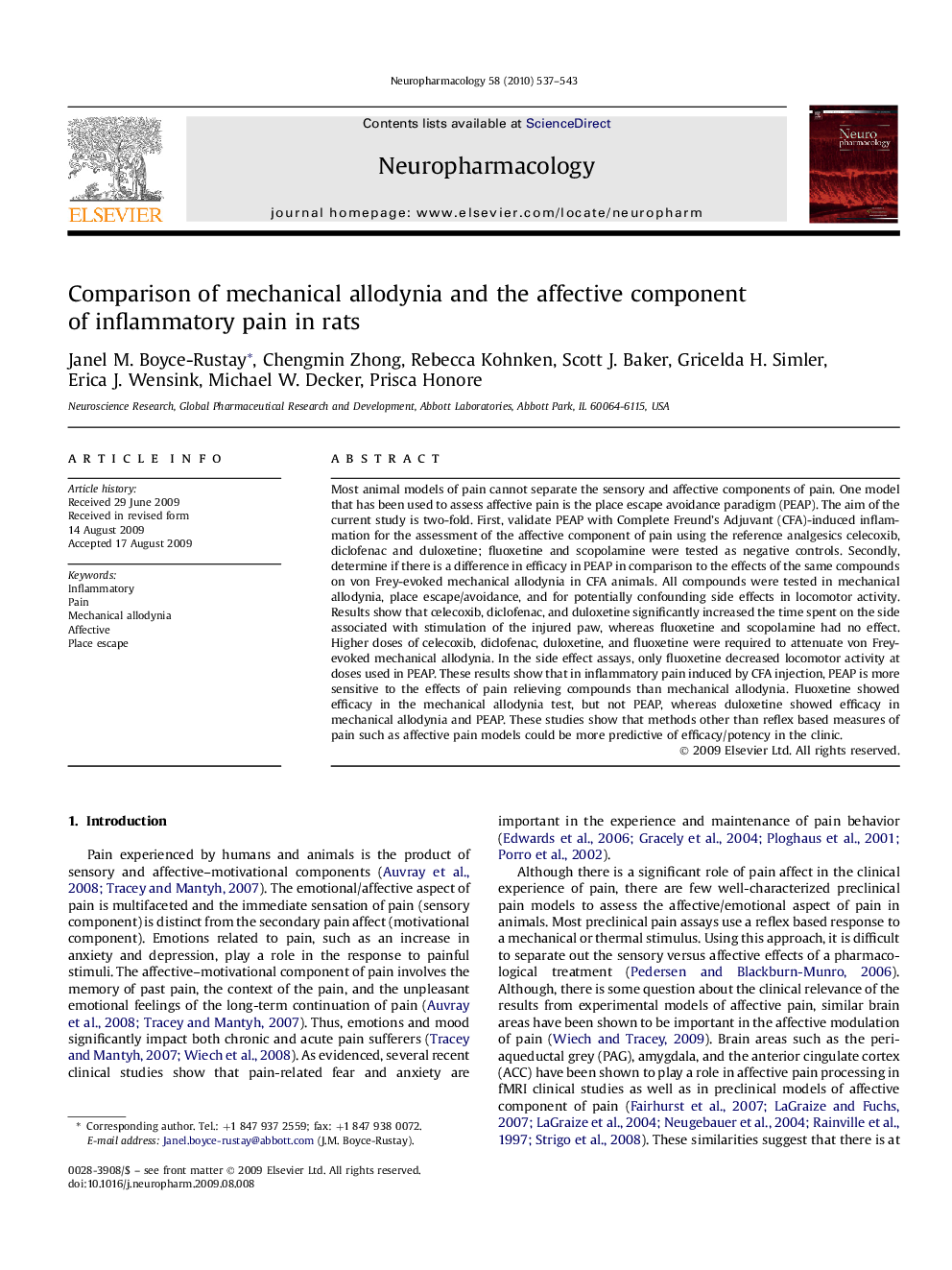| کد مقاله | کد نشریه | سال انتشار | مقاله انگلیسی | نسخه تمام متن |
|---|---|---|---|---|
| 2494337 | 1115558 | 2010 | 7 صفحه PDF | دانلود رایگان |

Most animal models of pain cannot separate the sensory and affective components of pain. One model that has been used to assess affective pain is the place escape avoidance paradigm (PEAP). The aim of the current study is two-fold. First, validate PEAP with Complete Freund's Adjuvant (CFA)-induced inflammation for the assessment of the affective component of pain using the reference analgesics celecoxib, diclofenac and duloxetine; fluoxetine and scopolamine were tested as negative controls. Secondly, determine if there is a difference in efficacy in PEAP in comparison to the effects of the same compounds on von Frey-evoked mechanical allodynia in CFA animals. All compounds were tested in mechanical allodynia, place escape/avoidance, and for potentially confounding side effects in locomotor activity. Results show that celecoxib, diclofenac, and duloxetine significantly increased the time spent on the side associated with stimulation of the injured paw, whereas fluoxetine and scopolamine had no effect. Higher doses of celecoxib, diclofenac, duloxetine, and fluoxetine were required to attenuate von Frey-evoked mechanical allodynia. In the side effect assays, only fluoxetine decreased locomotor activity at doses used in PEAP. These results show that in inflammatory pain induced by CFA injection, PEAP is more sensitive to the effects of pain relieving compounds than mechanical allodynia. Fluoxetine showed efficacy in the mechanical allodynia test, but not PEAP, whereas duloxetine showed efficacy in mechanical allodynia and PEAP. These studies show that methods other than reflex based measures of pain such as affective pain models could be more predictive of efficacy/potency in the clinic.
Journal: Neuropharmacology - Volume 58, Issue 2, February 2010, Pages 537–543